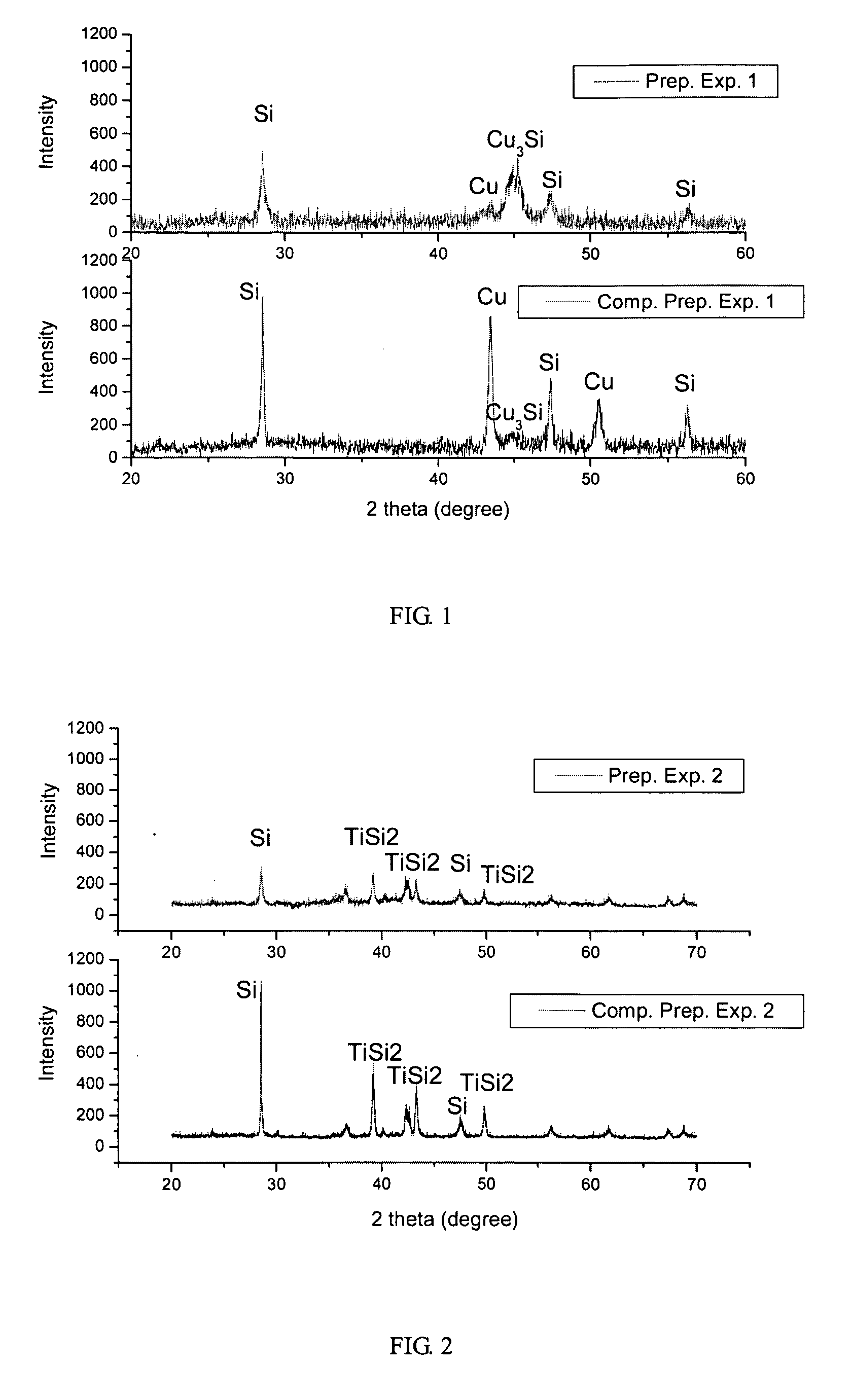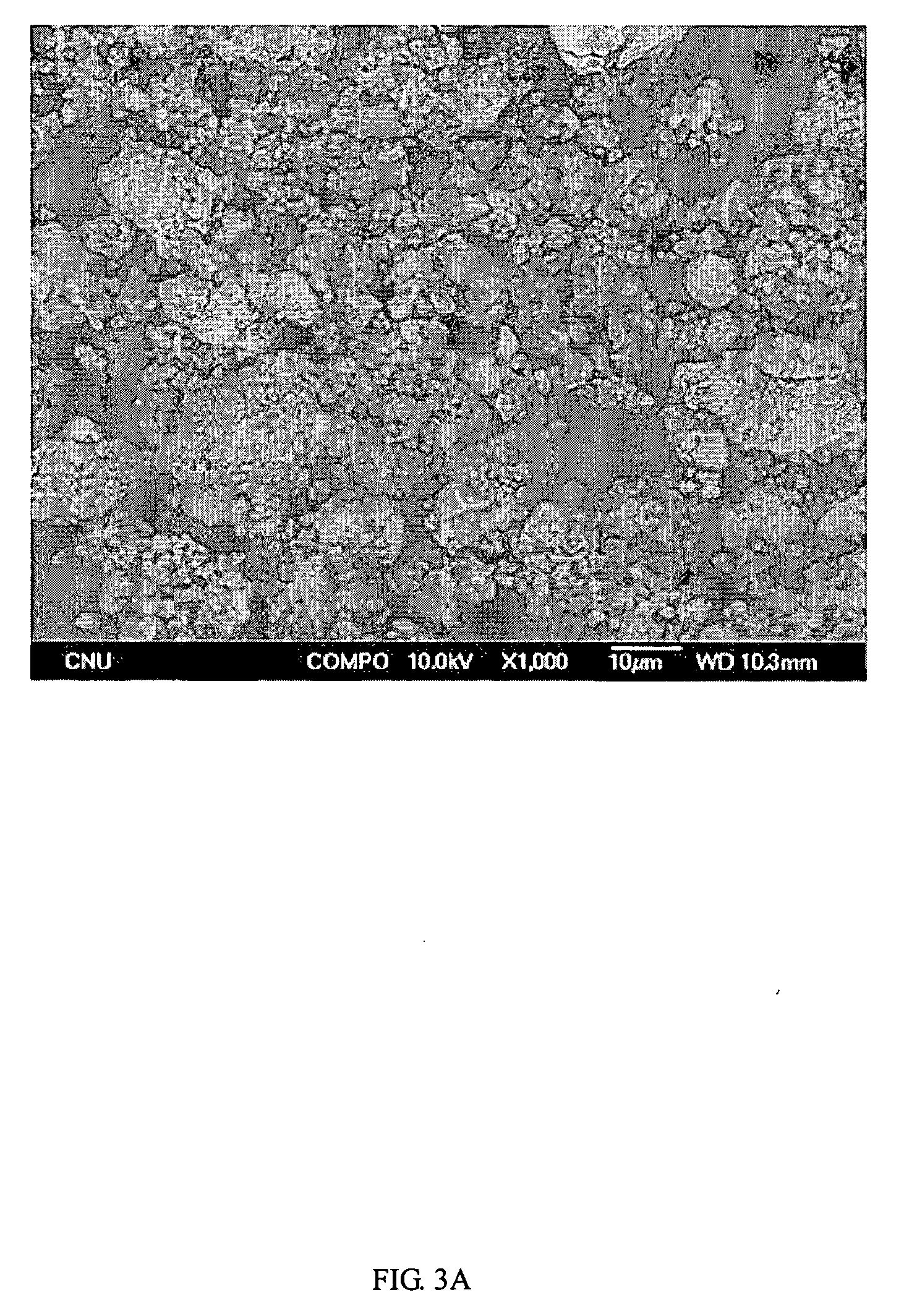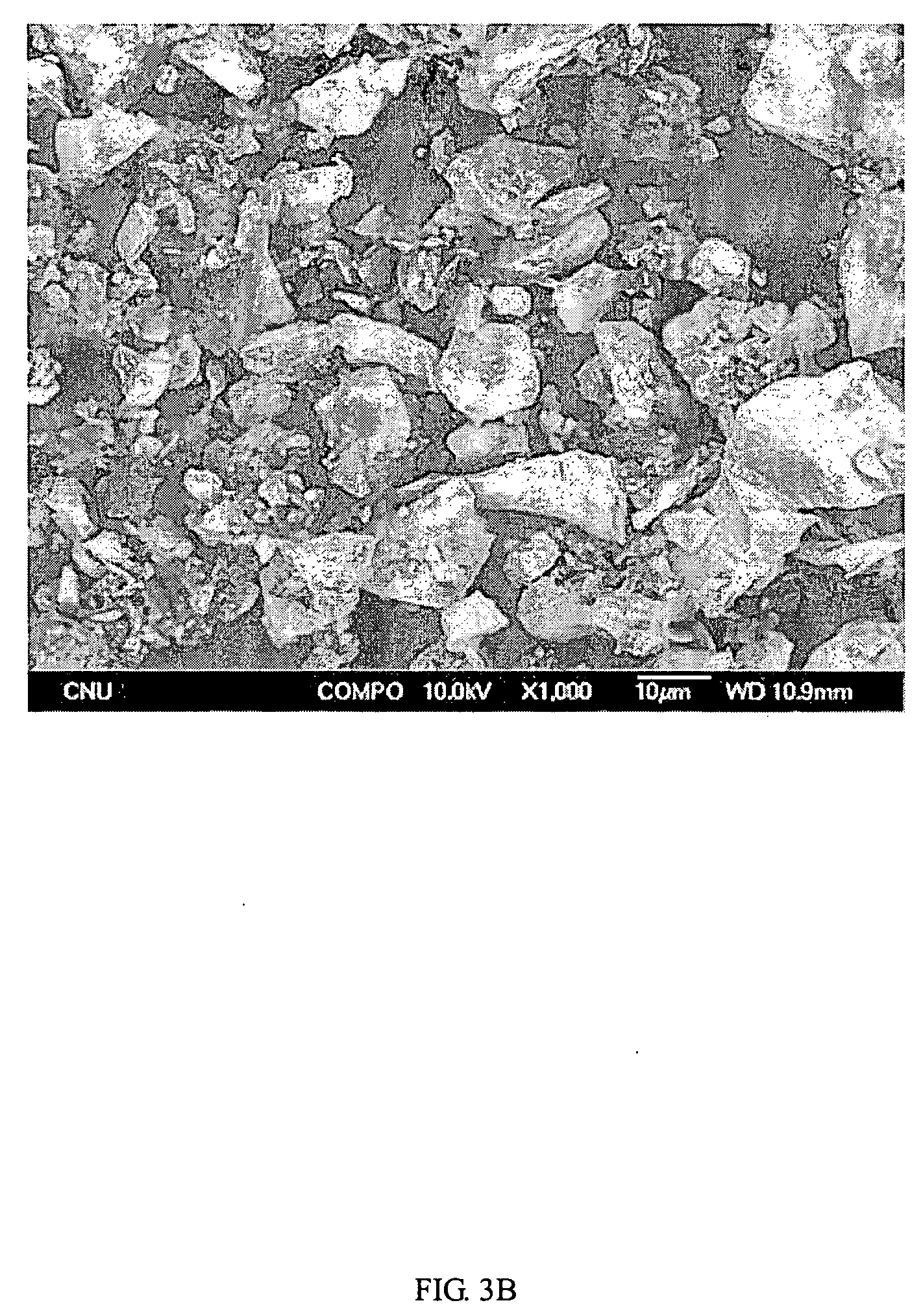Anode active material hybridizing carbon nanofiber for lithium secondary battery
a lithium secondary battery and active material technology, applied in the manufacturing process of electrodes, cell components, electrochemical generators, etc., can solve the problems of increasing the non-reversible capacity of the battery, improving and unable to commercially apply the anode active material prepared by amorphous carbon coating to plate type or fiber type active material,
- Summary
- Abstract
- Description
- Claims
- Application Information
AI Technical Summary
Problems solved by technology
Method used
Image
Examples
preparation example 1
Preparation of Anode Active Material Hybridizing Carbon Nanofiber
[0048]20 g of Si powder (made in China, more than 99.9% purity, #270 sieve treatment) and 20 g of Cu powder (Aldrich, more than 99% purity) are milled by Agitation Mill (ITOH, made in Japan) at argon atmosphere for 48 hours. In the presence of said powder as a support, carbon nanofiber has been grown by chemical vapor deposition method using ethylene gas and 5 wt % of Ni catalyst.
preparation example 2
Preparation of Anode Active Material Hybridizing Carbon Nanofiber
[0049]20 g of Si agglomerate (made in China, more than 99.9% purity) and 4 g of Ti rod (Aldrich, more than 99.7% purity) are melted at 1,500° C. using a melt spinning method. Then, melted product is rapidly cooled at a rate of 107 K / sec. The obtained powder is milled by SPEX Mill (Fritzch, Germany) at argon atmosphere for 4 hours. In the presence of said powder as a support, carbon nanofiber has been grown by chemical vapor deposition method using ethylene gas and 5 wt % Ni catalyst.
preparation example 3
Preparation of Anode Active Material Hybridizing Carbon Nanofiber
[0050]20 g of Si powder and 20 g of Mg powder (Aldrich, more than 99% purity) are milled by SPEX Mill (Fritzch, Germany) at argon atmosphere for 10 hours. Then, 20 wt % of petrochemical pitch (made in China, 200° C. softening point) is added and mixed. After said powder is further milled by the same manner by SPEX Mill (Fritzch, Germany) at argon atmosphere for 2 hours, the obtained powder is carbonized at 650° C. for 2 hours. In the presence of said powder as support, carbon nanofiber has been grown by chemical vapor deposition method using ethylene gas and 5 wt % Co catalyst.
PUM
 Login to View More
Login to View More Abstract
Description
Claims
Application Information
 Login to View More
Login to View More - R&D
- Intellectual Property
- Life Sciences
- Materials
- Tech Scout
- Unparalleled Data Quality
- Higher Quality Content
- 60% Fewer Hallucinations
Browse by: Latest US Patents, China's latest patents, Technical Efficacy Thesaurus, Application Domain, Technology Topic, Popular Technical Reports.
© 2025 PatSnap. All rights reserved.Legal|Privacy policy|Modern Slavery Act Transparency Statement|Sitemap|About US| Contact US: help@patsnap.com



